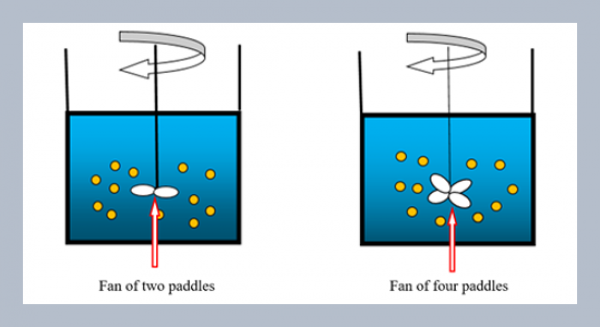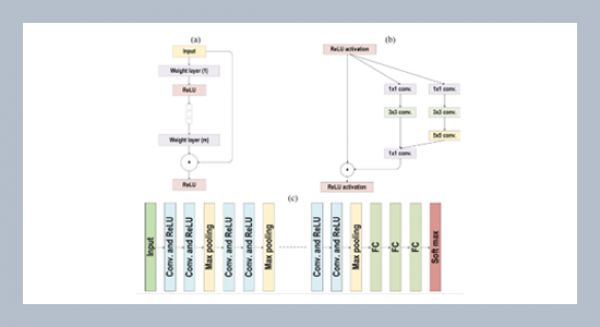REFERENCES
- [1] Shoda, M. 2000. Bacterial control of plant diseases. Journal of Bioscience and Bioengineering, 89: 515–521.
- [2] Food and Drug Administration. 1999. Code of Federal Regulations, title 21: food and drugs, chapter I: food and drug administration department of health and human services, part 184: direct food substances affirmed as generally recognized as safe. US Government Printing Office, Washington, DC.
- [3] Mari, M., Guizzardi, M., and Folchi, A. B. 1996. Post harvest biological control of grey mould (Botrytis cinerea) on fresh-market tomatoes with Bacillus amyloliquefaciens. Crop Protection, 15: 699–705.
- [4] Yu, G. Y., and Sinclair, J. B. 1996. Evaluation of Bacillus amyloliquefaciens B94 for control of Rhizoctonia seedling disease on soybeans. Phytopathology, 86: S54.
- [5] Hiradate, S., Yoshida, S., Sugie, H., Yada, H., and Fujii, Y. 2002. Mulberry anthracnose antagonists (iturins) produced by Bacillus amyloliquefaciens RC-2. Phytochemistry, 6: 693–698.
- [6] Chiou, A. L., and Wu, W. S. 2001. Isolation, identification and evaluation of bacterial antagonists against Botrytis elliptica on Lily. Journal of Phytopathology, 149: 319–321.
- [7] Chiou, A. L., and Wu, W. S. 2003. Formulation of Bacillus amyloliquefaciens B128 for control of lily grey mould (Botrytis elliptica). Journal of Phytopathology, 151: 13–18.
- [8] Cho, S. J., Oh, S. H., Pridmore, R. D., Juillerat, M. A., and Lee, C.H. 2003. Purification and characterization of proteases from Bacillus amyloliquefaciens isolated from traditional soybean fermentation starter. Journal of Agricultural and Food Chemistry, 51: 7664–7670.
- [9] Koumoutsi, A., Chen, X. H., Henne, A., Liesegang, H., Hitzeroth, G., Franke, P., Vater, J., and Borriss, R. 2004. Structural and functional characterization of gene clusters directing non-ribosomal synthesis of bioactive cyclic lipopeptides in Bacillus amyloliquefaciens strain FZB42. Journal of Bacteriology, 186: 1084–1096.
- [10] Mikkola, R., Andersson, M. A., Grigoriev, P., Teplova, V. V., Saris, N. E., Rainey, F. A., and Salonen, M.S. 2004. Bacillus amyloliquefaciens strains isolated from moisture-damaged buildings produced surfactin and a substance toxic to mammalian cells. Archives of Microbiology, 181: 314–323.
- [11] Ramos, J., Souza, E. M., Soares-Ramos, J. R., and Pedros, F. O. 2006. Antibiosis by Bacillus amyloliquefaciens ribonuclease barnase expressed in Escherichia coli against symbiotic and endophytic nitrogen-fixing bacteria. Journal of Biotechnology, 126: 291–294.
- [12] Yu, G. Y., Sinclair, J. B., Hartman, G. L., and Bertagnolli, B. L. 2002. Production of iturin A by Bacillus amyloliquefaciens suppressing Rhizoctonia solani. Soil Biology and Biochemistry, 34: 955–963.
- [13] Delcambe, L., Peypoux, F., Besson, F., Gisnaud, M., and Michel, G. 1977. Structure of iturin and iturin like substances. Biochemical Society Transactions, 5: 1122–1124.
- [14] Isogai, A., Takayama, S., Murakoshi, S., and Suzuki, A. 1982. Structures of β-amino acids in antibiotics iturin A. Tetrahedron Letters, 23: 3065–3068.
- [15] Tsuge, K., Akiyama, T., and Shoda, M. 2001. Cloning, sequencing and characterization of iturin A operon. Journal of Bacteriology, 183: 6265–6273.
- [16] Phae, C. G., Shoda, M., and Kuboda, H. 1990. Suppressive effect of Bacillus subtilis and its products on phytopathogenic microorganisms. Journal of Fermentations and Bioengineering, 69: 1–7.
- [17] Phae, C. G., and Shoda, M. 1990. Expression of suppressive effect of Bacillus subtilis and its products on phytopathogens in inoculated coposts. Journal of Fermentations and Bioengineering, 70: 409–414.
- [18] Quentin, M. J., Besson, F., Peypoux, F., and Michel, G. 1982. Action of peptidolipidic antibiotics of the iturin group on erythrocytes. Effect of some lipids on hemolysis. Biochimica Biophysica Acta, 684: 207–211.
- [19] Yoshida, S., Hiradate, S., Tsukamoto, T., Hatakeda, K., and Shirata, A. 2001. Antimicrobial activity of culture filtrate of Bacillus amyloliquefaciens RC-2 isolated from mulberry leaves. Phytopathology, 91: 181–187.
- [20] Toure, Y., Ongena, M., Jacques, P., Guiro, A., and Thonart, P. 2004. Role of lipopeptides produced by Bacillus subtilis GA1 in the reduction of grey mould disease caused by Botrytis cinerea on apple. Journal of Applied Microbiology, 96: 1151–1160.
- [21] Phae, C. G., Shoda, M., Nobuhiro, K., Nakano, M., and Ushiyama, K. 1992. Biological control of crown and root and bacterial wilt of tomato by Bacillus subtilis Annals of Phytopathology Society, 58: 329–339.
- [22] Mizumoto, S., Hirai, M., and Shoda, M. 2007. Enhanced iturin A production by Bacillus subtilis and its effect on suppression of the plant pathogen Rhizoctonia solani. Applied Microbiology and Biotechnology, 75: 1265–1274.
- [23] Ohno, A., Ano, T., and Shoda, M. 1993. Effect of temperature change and aeration on the production of antifungal peptide antibiotic iturin by Bacillus subtilis NB22 in liquid cultivation. Journal of Fermentations and Bioengineering, 75: 463–465.
- [24] Akpa, E., Jacques, P., Wathelet, B., Paquot, M., Fucks, R., Budzikiewicz, H., and Thonart, P. 2001. Influence of culture conditions on lipopeptide production by Bacillus subtilis. Applied Biochemistry and Biotechnology, 91: 551–561.
- [25] Rahman, M. S., Ano, T., and Shoda, M. 2006. Second stage production of iturin A by induced germination of Bacillus subtilis Journal of Biotechnology, 125: 513–515.
- [26] Slininger, P. J., and Jackson, M.A. 1992. Nutritional factors regulating growth and accumulation of phenazine-1-carboxylic acid by Pseudomonas fluorescens 2-79, Applied Microbiology and Biotechnology, 37: 388–392.
- [27] Duffy, B. K., and Defago, G. 1999. Environmental factors modulating antibiotic and siderophore biosynthesis by Pseudomonas fluorescens biocontrol strains. Applied Environmental Microbiology, 65: 2429–2438.
- [28] Rao, Y. K., Tsay, K. J., Wu, W. S., and Tzeng, Y. M. 2007. Medium optimization of carbon and nitrogen sources for the production of spores from Bacillus amyloliquefaciens B128 using response surface methodology. Process Biochemistry, 42: 535–541.
- [29] Kojima, I., Cheng, Y. R., Mohan, V., and Demain, A. L. 1995. Carbon source nutrition of rapamycin biosynthesis in Streptomyces hygroscopicus. Journal of Industrial Microbiology and Biotechnology, 14: 436–439.
- [30] Schimana, J., Walker, M., Zeeck, A., and Fiedler, H. P. 2001. Simocyclinones: diversity of metabolites is dependent on fermentation conditions. Journal of Industrial Microbiology and Biotechnology, 27, 144–148.
- [31] Milner, J. L., Raffel, S. J., Lethbridge, B. J., and Handelsman, J. 1995. Culture conditions that influence accumulation of zwittermicin A by Bacillus cereus Applied Microbiology and Biotechnology, 43: 685–691.
- [32] Wei, Y. H., Wang, L. F., and Chang, J.S. 2004. Optimizing iron supplement strategies for enhanced surfactin production with Bacillus subtilis. Biotechnology Progress, 20: 979–983.
- [33] Mizumoto, S., Hirai, M., and Shoda, M. 2006. Production of lipopeptide antibiotic iturin A using soybean curd residue cultivated with Bacillus subtilis in solid-state fermentation. Applied Microbiology and Biotechnology, 72: 869–875.















